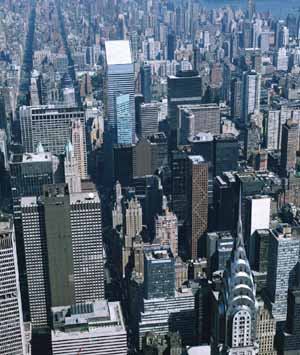Among Manhattan rental properties with 40 units or more, the estimated 2.3 percent vacancy rate for the third quarter was unchanged from the same period one year ago. Asking rents in rental assets rose 6.1 percent year over year in the third quarter to $3,560 per month. During the same period, effective rents gained 6.3 percent to reach $3,467 per month. Vacancy in buildings with 40 units or more is forecast to decrease 10 basis points this year to 2.2 percent. Asking rents in these buildings will advance 5.7 percent to $3,629 per month, and effective rents will climb 5.8 percent to $3,530 per month.
INVESTMENT STRATEGIES Turning to Manhattan’s investment market, transactions have continued to slow down from the remarkable pace recorded over the past two years. Tighter lending terms may further constrict deal flow in the months ahead—but they may signal to hesitant owners that it’s time to put their properties on the market. Properties with solid operating histories and assumable financing will tend to move quickly when listed, while other assets may linger on the market a while longer. A factor that may influence some prospective buyers and transactions, however, is the recent closing of a loophole in the Mitchell-Lama affordable housing guidelines that permitted owners to exit the program and raise rents to market rate.
Like its neighbor to the north, Brooklyn has seen a healthy housing demand due to a strong local economy and a rapidly changing perception of New York City’s most populous borough as a desirable and relatively affordable place to live. Brooklyn has approximately 2.5 million residents and 613,000 renter-occupied housing units. Nationwide, only Los Angeles County and Cook County, Ill., boast more units of renter-occupied housing, but those markets may not have similar rental fundamentals. Indeed, rental vacancy in Brooklyn remains very tight, with the vacancy rate for market-rate properties containing 40 units or more down nearly 3 percent through the first three quarters of this year.
Meanwhile, the borough’s housing stock is receiving a significant make-over, with new projects announced almost daily. Much of the housing stock envisioned for Brooklyn will be for-sale multifamily developments, and many projects involve the conversion of vacant or underutilized industrial buildings, including the Eberhard Faber pencil factory and the former Domino Sugar factory. In the latter structure, preliminary plans call for 2,400 residential units.
As for investment in Brooklyn, many apartment buyers remain active in the market, although transaction velocity has eased from its torrid pace established over the past two years. Recent disruptions in the capital markets have further slowed deal flow, but the emergence of new sources for acquisition financing should improve momentum in the months ahead. Cap rates can vary widely but typically fall between 5 percent and 6.5 percent, while gross rent multipliers can range from 8.5 percent into the low teens. In addition to existing rental properties, development sites in established and reemerging areas are also coveted by investors with long-term horizons.
During the most recent 12-month period, transaction velocity has declined 18 percent, yet dollar volume has jumped 27 percent. Comparisons to year-earlier periods will be difficult in the near term due to a high number of deals over the past two years.
The median price of properties sold over the past year is $228,300 per unit, a gain of 16 percent from a year earlier. The increase is attributable to a 20 percent rise in the median price of properties selling for $20 million and more to $513,700 per unit. Cap rates can vary widely but typically fall between 4.4 percent and 5.8 percent. Properties trading at the low end of the spectrum are usually purchased in anticipation of future rent deregulation.
HEALTHY APPLE While the lending environment has tightened, the supply and demand balance in New York City remains extremely healthy. Furthermore, as ARMs adjust and mortgage payments become unaffordable, some homeowners and condo owners will return to the rental market. Foreclosure sales are up 90 percent nationwide this year and are forecast to rise further.
While user demand will remain strong, a very slight decrease in investor demand will be evident moving into 2008. Transaction velocity will gradually recede from recent levels in Manhattan, but prices will continue to climb. Deals involving properties priced at $20 million and more will push overall prices higher, while values at lower price points will rise at a slightly slower, but steady, rate.
Edward Jordan is the regional manager of the Manhattan office of Marcus & Millichap. He wrote this in conjunction with J.D. Parker, regional manager in the firm’s Brooklyn office.
FAST FACTS
Considering Manhattan?
Here’s what you need to know:
NOTABLE: Of all Manhattan residents, roughly 79 percent hold white-collar jobs, and more than 71 percent have some college education. The first presentation of 3-D films before a paying audience took place at Manhattan’s Astor Theater on June 10, 1915. The Big Apple is a term coined by musicians meaning to play the big time.
